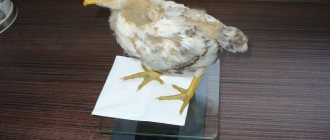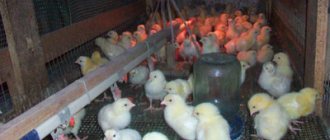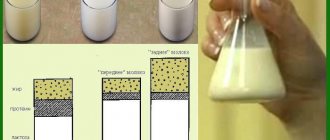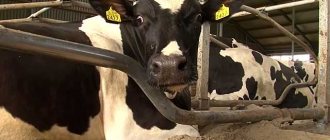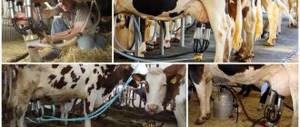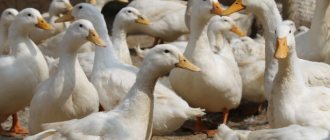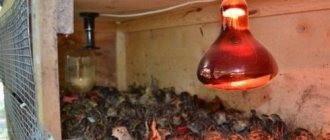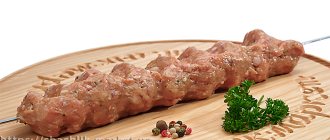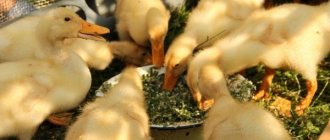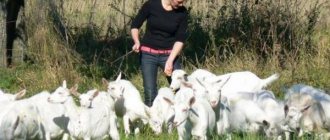Like any other animal, sometimes a situation occurs with pigs when the mother cannot feed her children. How to feed piglets without a sow in such a situation? Is it possible to give babies powdered milk? You can find out the answer to this difficult question further from our article.
Let’s say right away that, due to some characteristics of newborn piglets, it is recommended to feed the sow colostrum for at least the first three days. If we compare colostrum with cow's milk, it contains an order of magnitude more protein and dry matter. Its digestibility is almost 100%. Also, with colostrum from the sow, the piglet receives the immunity it needs in the first days of life.
But still, if there is no colostrum, what then, should we not leave the babies to die? Of course not! There is always an alternative, although not as good as real colostrum. For feeding, special mixtures are used, which, if you have the necessary ingredients, you can prepare yourself without any difficulties.
In addition, you can use mixtures based on diluted milk powder. You can find out how to use and dilute it in the veterinary pharmacy from the seller or read in the instructions that should be in the package. You will also need a special device for feeding, because newborn piglets do not yet know how to drink from a bowl or other container and they definitely need their mother's nipple.
Colostrum substitutes
Feeding piglets in the first few days can be carried out with one of the artificially prepared mixtures, similar in composition to maternal colostrum and containing the necessary vitamin supplements. The most popular (and therefore effective) are the following compositions:
- Cow or goat milk 1 l, boiled water 30 ml, sugar 2 g, 1 chicken egg, a mixture of vitamins A (2 parts) and D (1 part) 1 ml, 10 ml ferrous sulfate solution (1%), 2.5 g aminopeptide, 1.01 g biomycin;
- To 1 liter of whole milk add 15 g of fish oil, 4 chicken eggs, 25 g of sugar, 10 g of salt.
Consultant of the Russian pig-breeding portal N. Chernysheva recommends adding, in addition to 1 egg, 1 tbsp per 1 liter of cow's milk. l. rast. oil, 1 tsp. sugar, another tbsp. l. interior lard. Moreover, first the chicken yolk is beaten with lard, and the vitamins are given one drop at a time every other day.
If the milk is from a private farm, and you are sure that it is safe for babies, then you can only warm it up. Otherwise, the milk is boiled and cooled to t +37 +39˚С. All ingredients are thoroughly mixed in a mixer, first of all, beat eggs, sugar, and fat.
What are the differences between colostrum and milk?
It is believed that if the calf does not receive colostrum in the first hours of life, then its chances of survival are reduced. But why? It's all about the composition of colostrum and milk, which are presented in the table:
| Index, % | Hours after farrowing | ||||
| 3 | 12 | 24 | 48 | ||
| Dry matter | 30,2 | 28,7 | 20,8 | 19,6 | 21,2 |
| Squirrels | 18,9 | 17,5 | 10,2 | 7,2 | 6,9 |
| Fats | 7,2 | 7,3 | 7,2 | 9,5 | 9,3 |
| Lactose | 2,5 | 2,7 | 3,4 | 4,0 | 4,8 |
After farrowing, colostrum is a thick emulsion containing 30% dry matter, of which 18.9% is protein. Colostrum contains an increased amount of gamma globulins, which are antibodies against infectious diseases. The crane cells of the intestinal walls pass proteins into the blood.
After this, the taps are closed and polymers of nitrogenous compounds: proteins, DNA, RNA cannot penetrate the intestinal barrier. They are broken down by the body's enzymes into short-chain peptides or individual amino acids and nitrogenous bases. This is how a healthy body protects itself from the penetration of foreign proteins.
Two days after farrowing, the protein level stabilizes at 6.9%. That is, when a piglet receives colostrum immediately after birth, it receives 18.9-6.9 = 12% of antibodies. After 12 hours, the amount of protective protein is reduced to 10.2-6.9 = 4.7%. Therefore, it is impossible to create a substitute for pork colostrum. You can adjust the protein concentration to the amount contained in 12-hour colostrum, but the piglet will not receive antibodies.
Be sure to read:
Pig diseases: symptoms and treatment, what to do if the animal does not eat and lies down
The amount of proteins in milk drops sharply, the level of lactose increases, and the concentration of fats changes little. Pork milk cannot be replaced with any other. So, cow milk contains 12% dry matter, 3; 3.5; 4.7% protein, fat and lactose. However, piglets can be artificially fed if the sow dies or loses milk.
Feeding methods
If the number of piglets is small, then it is quite possible to carry out artificial feeding manually, using a regular nipple or (in the first day) even a syringe. Moreover, experts advise, due to the anatomical features of the structure, to insert the syringe deeper. And, of course, all feeding instruments must be sterile.
If the pig has no milk at all or refuses to feed, all the babies are left without feeding. The best way out in this situation would be to build a special feeder that to some extent imitates a sow:
- Take a pipe with a diameter of about 8 cm and a length of approximately 1.5 m;
- Small holes are made along the entire length and short (20 cm) tubes are welded to them, with a diameter suitable for nipples;
- There are up to 14 such nipples made so that there is certainly enough for everyone;
- Short stands are welded from below (so that the pig can reach the nipple), and an adapter is attached to the top through which milk will flow;
- The ends of the pipe are welded.
Craftsmen are making some more improvements:
- Adding a soundtrack that imitates a sow's call to feeding;
- Covered with soft rubber that feels like pig skin.
The requirements for sterility remain the same: at the end of each feeding, always thoroughly wash the feeder. This machine easily feeds babies from the first days of life to one month of age and even older. Artificial feeding of Vietnamese pot-bellied piglets is no different from the process of raising an ordinary white pig.
What to feed from
So, we have already figured out what to feed suckling piglets. Now the question remains: how to feed them, or rather, from what? Especially for such cases, you can build a fairly simple structure. It will require several pieces of metal pipes, nipples, an adapter and a plastic container for colostrum.
- First you need to take a 1.5 m piece of pipe with a diameter of approximately 80 mm.
- Then, every 10 cm along the entire length of this pipe, holes are made in a row for pipes of smaller diameter. There should be approximately 13-14 such holes.
- Next, we take pieces of metal pipes with a smaller diameter (their length should be no more than 20 cm) and weld them to the holes made.
- We put plugs on both ends of the one and a half meter pipe.
- We attach the legs to the pipe so that the pipes welded in a row are on the side. The height of the structure on legs should not be more than 12 cm from the floor surface and the structure should be placed horizontally to the floor.
- We put nipples on the protruding ends of the pipes.
- On top, to a large diameter pipe, we attach an adapter for a plastic container, from which the artificial mixture will then be supplied.
Piglets are placed on such a feeder from the first day. They feed this way up to five times a day. After each feeding, the feeder is washed with hot water and cleaned. Piglets can be fed from it up to two months of age. It is also convenient to feed not only artificial milk substitutes, but also various medicinal infusions and diluted feed additives. This way, breeding pigs becomes much easier, because the main risk group is piglets under one month of age, and with this design there should be no problems with feeding them.
Feeding standards for piglets based on FSM
ZSM is prepared according to the attached instructions - diluted with water in ratios of 1/7-1/10.
Be sure to read:
The piglet does not eat and lies down, what should I do?
The feeding scheme for artificially fed piglets is presented in the table:
| Age, days | Daily portion of diluted milk replacer, ml | Number of feedings per day | Approximate amount of feed, g/day |
| 1-5 | 300 | 6 | No |
| 6-10 | 700 | 5 | training |
| 11-20 | 1200 | from 25 to 100 | |
| 21-30 | 2500 | 4 | from100 to 200 |
| 31-40 | 3000 | 4 | From 200 to 400 |
On the first day of life, piglets suckle from their mother every hour and a half, so when drinking milk replacer, you should adhere to the same schedule. Every day the intervals are shortened and brought to 6 by the fifth day of life.
Prestarter for piglets
From 5-7 days, flat saucer feeders are sprinkled with a little prestarter feed to arouse the babies' curiosity. Further use of feed is ad libitum according to palatability. In the fourth decade of cultivation, the volume of supplements is reduced and gradually switched from prestarter to starter. You should not prematurely transfer babies to homemade feed mixture.
Amateur pig farmers make pig milk substitutes based on cow milk according to the following recipe:
| Component | Quantity, g |
| Milk | 1000 |
| Fish fat | 15 |
| Table salt 10 g | 10 |
| Sugar | 25 |
| Chicken eggs | 4 pieces |
Homemade pork milk substitute is inferior in quality to industrial substitutes and costs significantly more.
It is important to know! To understand what herbs can or cannot be used in the diet of pigs, read our article: What grass can be given to piglets and what can’t? Harmful and beneficial herbs for pigs, veterinarian advice
Types of fertilizing
It is not recommended to feed babies only from a nipple for a long time. In this case, there is a risk that they will start sucking the food. Such a pig, according to professionals, will never gain good weight.
Therefore, already from 3-5 days (provided they are in good health), weanlings should receive, in parallel with feeding from the nipple, food in a bowl or trough:
- Roasted grains of barley and wheat;
- Moist red clay, crushed into small pieces;
- Charcoal, preferably hardwood;
- Crushed chalk;
- Uninfected pieces of turf.
Sod is taken from areas where pigs have not walked, and there is no danger of infection with worms. All types of fertilizers are changed to fresh ones every 2-3 days. Water is placed in a separate container, which is also renewed periodically.
Feeding scheme
An approximate diagram will tell you what to feed the cubs.
On the first day, give half a liter of skim milk, alternating with 700 ml of cow's milk, which includes fish oil. Then slowly increase the volume of skim milk and skim milk to 1 liter.
To improve digestion, you can give the pigs an infusion of horse sorrel or a decoction of alder cones, 40 ml 2 times a day.
At this stage of maturation, young animals need to prepare milk porridges with barley or oatmeal concentrate. In a month you need to spend 20 kg of concentrate on one head.
Give only freshly brewed food, which the pig must consume within 25 minutes! Do not allow food to remain uneaten in the feeder!
How to teach pigs to eat on their own, if before this the piglets only sucked milk from the sow?
We prepare a shallow cup, pour a portion of milk, take the pig and dip its nose into the food. A few days - and the month-old baby will happily drink directly from the container.
What to feed piglets weaned from pigs
Babies are taken from their mother at different ages, starting from a month. Why do farmers decide to take this early step, which causes them a lot of trouble? Well, first of all, they save a sow who has little milk and is completely exhausted. And secondly, they provide adequate complementary feeding to babies in a timely manner, thereby promoting their further growth and development.
When separating one-month or even two-month-old pigs from their mother, they should be provided with appropriate conditions. There should be no drafts in the room where they will be located, and the air temperature should be at least twenty degrees. It is also necessary to regularly change the bedding; the pens must be clean and dry.
Experienced pig breeders recommend weaning gradually, first weaning the most developed babies from their mother, and after five days the rest.
Now about feeding. In babies, gastric juice is released only during feeding, so during the first three months after birth they are fed often, but in small doses.
In addition to mother's milk (or artificial colostrum), a week after birth, babies are fed a little dry food. After separation from the mother, in addition to cow's milk or its substitute, they also give dry food, but in the first days its amount is reduced by half, and after five days it is increased again. Piglets also need to be given fish oil, vitamins A and D. Milk can be replaced with skimmed milk. The main thing is to keep the feeders clean so that the food in them does not turn sour and become a source of disease.
For two-month-old piglets, in addition to milk, its substitute, curdled milk and skim milk, ground barley, corn, oats, peas, millet, bran, feed yeast, meat and bone meal, and vegetables are gradually introduced into the diet. Or, specialized combined feeds are purchased, the composition of which is designed for a certain age of young animals.
Feed composition
Feeding of weaned piglets should be carried out with an extremely smooth transition from milk feeding to an adult diet, and this process, as already mentioned, should begin literally from the second week of life.
When piglets are completely weaned from their mother, no matter how many months they are, they must be fed with the addition of dairy products - 1-1.5 liters of fresh or fermented milk. The older the baby grows, the less milk they give him, reducing the amount in the first 3 decades by 200 ml each, and after that by 100 ml.
However, the diet of one-month-old piglets should be quite varied and contain all the necessary components for full development:
- 0.7-0.8 kg – food concentrates;
- 0.5-1 kg – boiled potatoes;
- 0.2-0.4 kg – beets, carrots;
- 0.1-0.2 kg – hay or grass flour.
In the summer, it is important to start walking, which will help children get rid of the effects of psychological stress and will help strengthen the musculoskeletal system. During this period, special attention should be paid to the presence in the diet of a sufficient amount of green feed (up to 1.5 kg). At the age of 2 months, all standards increase by 20 - 30%, and feedings are reduced to 4-5 times a day. By the age of 4 months, piglets are fed according to an adult diet - 3 or even 2 times a day.
These are all the basic techniques and methods of how you can feed newborn piglets without a sow, as well as feeding weaned piglets in the first months of independent life. It’s up to you to decide whether it’s worth making the effort to artificially feed or whether to purchase already raised gilts, whose survival guarantee is much higher.
Piglets, like any other small animal, need their mother's milk. Shared housing allows you to give a good start to the growth and development of piglets, because the sow will both warm them and feed them on time. But it is not always possible to raise babies in this way, and as they grow older, they are separated from their mother, so the question of what to feed piglets is always relevant and worries everyone who breeds pigs at home.
In this article we will look at how and what to feed newborn piglets who, for various reasons, find themselves without a sow, as well as how further fattening of one and a half and two month old babies who are weaned from their mother is carried out.
How to transfer piglets to compound feed
After the first week of life, piglets need to be gradually introduced to adult food. If you are unable to get ready-made food for small pigs, you can prepare the mixture yourself.
Table 2. Options for adult mixtures for week-old piglets
| Product | Option #1 | Option No. 2 | Option #3 |
| Cereals | 45% | 45% | 50% |
| Bran | 10% | 15% | 15% |
| Legumes | 10% | 10% | 20% |
| Cake | 15% | 0 | 0 |
| Bone meal | 14% | 13% | 8% |
| Chopped hay | 5% | 5% | 5% |
| Yeast (feed) | 0 | 0 | 0 |
| Chalk | 1% | 1,5% | 1,5% |
| Table salt | 0 | 0,5% | 0,5% |
The mixture is given in dry or steamed form. The grain (barley, corn or oats) is well cleaned and ground beforehand. The dry mixture can be prepared in advance and stored in a covered container. It should be given to piglets more often than wet food; it is good for digestion. But in this case, babies should be given more water.
Feeding
Greens
To prepare the stomach of a month-old animal for digesting coarser food, as well as to provide its body with vitamins, it is recommended to add green supplements to the diet. Freshly cut young grass can serve as such fertilizing. Legumes are especially useful. And if there is an opportunity to release piglets to graze on a green field, a meadow, then this is the best option.
In addition, at one month of age, animals can begin to be given little by little boiled or grated root vegetables: beets, carrots, turnips, rutabaga, turnips. Start with small portions, add root vegetables separately, and observe which of them the piglets eat with great pleasure: then feed this root vegetable in larger quantities.
And here you can watch a video about raising a Mangal pig.
In the video - green food for a piglet:
In any case, plant food is necessary for animals, since fiber is the basis of the diet of an adult pig.
Mineral
This type of feeding is necessary for one-month-old piglets only if you do not feed them with complete feed, where all trace elements are already included.
If you feed young animals with homemade mixtures, then there is a need for additional minerals. In order to satisfy this need, fish or meat and bone meal mixed with chalk is usually used. This mixture should be given to piglets separately from the main diet. Ideally, it is best to equip the nursery with a separate feeder - specifically for feeding.
You may also be interested in information about what Mangalitsa pigs look like and what they eat.
The video shows the preparation of mineral feed:
Solid feed
For one-month-old piglets, hard root vegetables must be grated. Over time, the grater is replaced by a fine shredder, and then simply by rough cutting.
If you give potatoes to animals, they must be boiled. After boiling, the potatoes are cooled and kneaded - and only in this form are they given to the piglets. If you dilute mashed potatoes with milk, the animals will really like this food. However, do not forget to immediately remove uneaten puree with milk from the feeders, as it turns sour very quickly.
Compound feed
Today, any farmer has the opportunity to purchase completely balanced, complete feed, suitable for feeding, including one-month-old piglets. Grain mixtures vary depending on the age of the animal, so you can choose a diet in any case.
For one-month-old piglets, it is important to choose finely ground feed so that the food can be easily absorbed by the animal’s delicate stomach.
When purchasing, make sure that this feed has all the necessary quality certificates and is manufactured in accordance with GOST, and not in the next basement.
For animals of one month of age, a starter set of feed is selected that best meets the needs of animals at this age. You can also feed two-month-old piglets with the starter kit, but then you need to change the feed to a coarser mixture.
As a rule, the manufacturer always encloses with the food instructions on the norms and volume of the diet, and also gives recommendations on the number of feedings and other useful tips. Don't forget to read the instructions before giving animal feed.
Feeding in winter
During the cold season, month-old animals need to add vitamin supplements to their regular diet. It can be dried nettle, hay infusion, grated fresh carrots. These supplements will help piglets strengthen their bodies, increase their immunity, and help them survive the winter. In addition, in cold weather, you can give month-old animals mineral supplements such as red clay and charcoal. It will also be interesting to know what reviews exist about Vietnamese pigs and what to feed them.
In the video, feeding piglets in winter:

